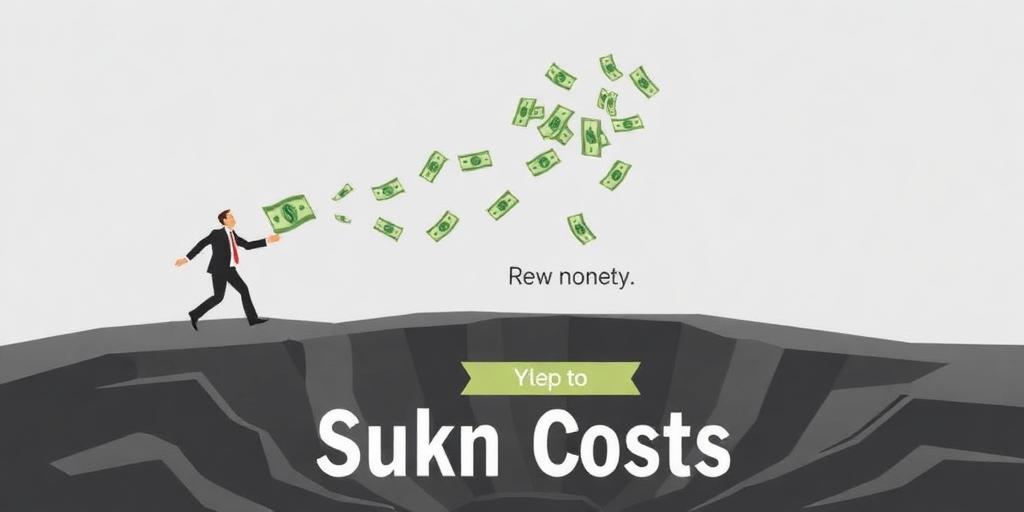Understanding the Sunk Cost Fallacy: Why You Should Avoid Throwing Good Money After Bad Investments
In the world of finance and decision-making, one concept stands out as a common pitfall: the sunk cost fallacy. This cognitive bias can lead individuals and organizations to make irrational decisions, often resulting in further losses. Understanding the sunk cost fallacy is crucial for making sound investment choices and avoiding the trap of throwing good money after bad.
What is the Sunk Cost Fallacy?
The sunk cost fallacy refers to the tendency to continue investing in a project, decision, or investment simply because you have already invested time, money, or effort into it, even if current evidence suggests that continuing is no longer the best course of action. In essence, it's the idea of not wanting to "waste" what you've already put in, even if cutting your losses would be more beneficial in the long run.
How the Sunk Cost Fallacy Works
- Initial Investment: You make an initial investment, whether it's money, time, or resources, into a project or venture.
- Realization of Loss: As time goes on, it becomes clear that the project is not performing as expected or is unlikely to achieve its goals.
- Emotional Attachment: Due to the initial investment, you develop an emotional attachment to the project. The thought of abandoning it feels like admitting failure or wasting resources.
- Continued Investment: Instead of cutting your losses, you continue to invest in the project, hoping that it will eventually turn around and justify the initial investment.
- Further Losses: Unfortunately, continuing to invest in a failing project often leads to further losses, as the underlying issues persist and compound.
Examples of the Sunk Cost Fallacy
- Home Renovation: Imagine you start a home renovation project but realize halfway through that it's more extensive and expensive than you initially anticipated. Despite the rising costs and potential for further complications, you continue with the renovation because you've already invested a significant amount of money.
- Business Venture: A company invests heavily in developing a new product, only to discover that there's little market demand for it. Instead of abandoning the project, they continue to pour resources into marketing and production, hoping to recoup their initial investment.
- Unfulfilling Relationship: An individual stays in a relationship that is no longer fulfilling or healthy because they've already invested years into it. The thought of ending the relationship feels like a waste of time and effort, even if staying is detrimental to their well-being.
How to Avoid the Sunk Cost Fallacy
- Recognize the Bias: The first step in avoiding the sunk cost fallacy is to recognize that it exists and that you are susceptible to it. Be aware of your tendency to cling to failing projects due to past investments.
- Focus on Future Costs and Benefits: When evaluating whether to continue with a project, focus on the future costs and benefits rather than dwelling on past investments. Consider what you stand to gain or lose by continuing, regardless of what you've already invested.
- Seek Objective Advice: Ask for advice from trusted friends, mentors, or experts who can provide an unbiased perspective on your situation. They may be able to see the situation more clearly than you can.
- Set Clear Goals and Metrics: Establish clear goals and metrics for your projects or investments upfront. This will help you objectively assess whether the project is on track and whether it's worth continuing.
- Be Willing to Cut Your Losses: Finally, be willing to cut your losses and walk away from failing projects, even if it means admitting failure or writing off past investments. Remember that sometimes, the best decision is to move on and focus on more promising opportunities.
Conclusion
The sunk cost fallacy is a common cognitive bias that can lead to irrational decision-making and further losses. By understanding how it works and implementing strategies to avoid it, you can make more informed investment choices and avoid the trap of throwing good money after bad. Remember to focus on future costs and benefits, seek objective advice, and be willing to cut your losses when necessary. Your financial well-being will thank you for it.









